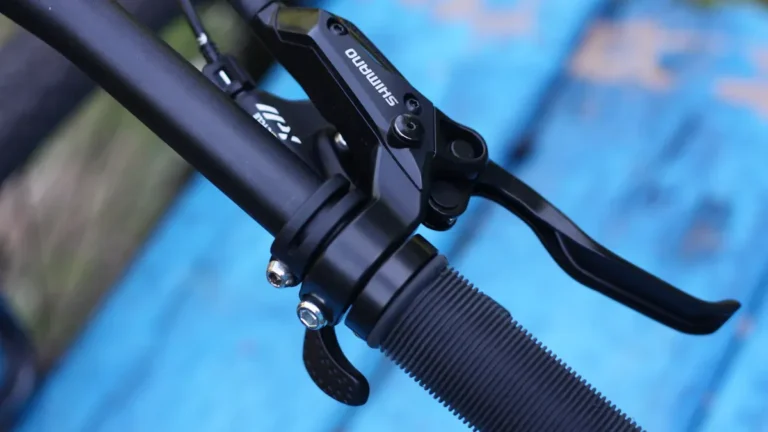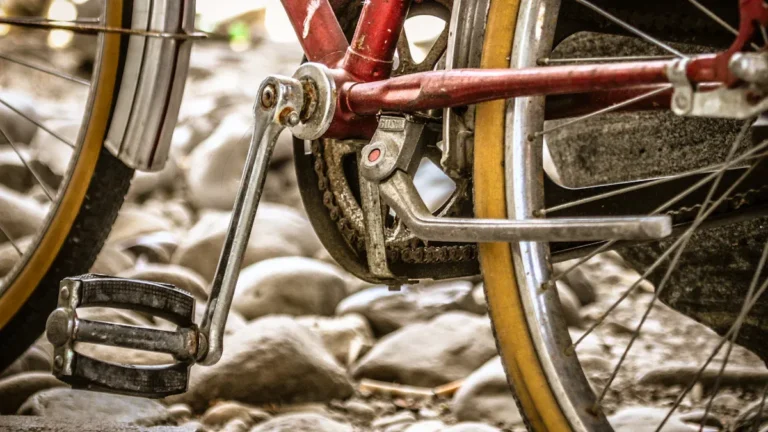Book Appointment Now
How to change tyre on bike

You change tyre on a bike by removing the wheel, swapping out the old tube, and putting everything back together. If you’ve never tried it before, don’t worry. You’ll find the process straightforward, and you’ll feel more confident each time you do it.
Key Takeaways
Gather essential tools like tire levers, a spare tube, and a pump before starting. This preparation makes the process smoother and more efficient.
Inspect the tire and rim for damage before installing a new tube. This step helps prevent future flats and ensures a safe ride.
Practice the steps for changing a tire multiple times. Familiarity boosts your confidence and reduces the chance of mistakes.
Tools and Preparation

Essential Tools
When you want to change a tire on your bicycle, you need a few basic tools. Here’s what you should have ready:
Tire levers: These help you pry the tire off the rim. Solid plastic tire levers work best, especially for tight road tires. Some levers come with spoke holders for extra grip.
Spare tube: Always keep a new tube handy. If you get a flat, you’ll need to swap out the old tube for a fresh one.
Tube patch kit: This kit lets you fix a punctured tube if you don’t have a spare. It’s smart to carry one in your bag.
Hand pump or CO2 inflator: You need to inflate the new tube after you install it.
Rags: These help you clean your hands and the tire.
Gloves: Protect your hands from dirt and sharp edges.
You’ll also notice different types of tubes. Schrader valves are common on most bicycles. Presta valves show up on higher-end models. Self-sealing tubes can help you avoid flats for up to two years. Some tire and rim combinations are easier to work with, but tough ones might need two levers or a bead jack.
Workspace Setup
Set up your workspace before you start. Choose a clean, flat area with good lighting. Put your bicycle upside down or use a bike stand to keep it steady. Make sure you have all your tools within reach. Wear gloves for safety. A stable workspace helps you work faster and keeps you safe. Cleanliness matters, too. A tidy area lowers the risk of contamination when you handle the tube and tire. If you work in a messy spot, you might breathe in dust or get dirt on your tube, which can cause problems later.
Tip: Loosen the brakes before you remove the wheel. This gives you more room to work and makes the process smoother.
Change Tyre Steps

Wheel Removal
When you want to change tyre on your bike, you start with wheel removal. You need to release the brakes and flip your bike upside down or use a stand. You then loosen the quick-release lever or unscrew the axle nuts. Some bikes have fenders that make wheel removal tricky. You might need to adjust the fender or move it out of the way. If you have trouble with lug nuts, try turning them to a different angle for easier removal. Sometimes, lug nuts stick if you haven’t removed the wheel in a long time. You may need a wrench for extra grip.
Here’s a quick look at how long this step and the whole process might take:
Experience Level | Time Required |
|---|---|
Beginner | Up to 20 minutes or more |
Experienced | As little as 7 minutes |
You may spend more time on wheel removal if you’re new to the process. Don’t rush. Take your time and make sure you keep all parts safe.
Tire and Tube Removal
After you remove the wheel, you move on to tire and tube removal. First, you need to deflate the tire. The way you do this depends on the valve type:
Valve Type | Technique Description |
|---|---|
Schrader | Remove the cap, use a pokey object to press the center pin and let air out slowly. |
Presta | Remove the cap, loosen the nut, and press the pin with your finger. |
Dunlop | Twist the nut until air escapes. |
Once the tire is flat, grab your tire levers. Slide one lever under the tire bead and hook it to a spoke. Use the second lever to work around the rim and lift the bead off. Some tires, especially folding bead types, can be tough to remove. The shape and flexibility of folding bead tires make installation and removal harder. If your tire was shipped flat, the bead might not fit easily onto the rim. You may need extra patience for removing tire and tube.
Inspection
Before you install tube inside tire, you need to inspect everything. Look for sharp objects like nails or glass stuck in the tread. Check inside the tire casing for debris. Examine the sidewall for cuts or damage. Inspect the tire bead for wear. Make sure the rim strip is in place and not torn. You also want to check the rim for cracks, chips, scratches, bends, warps, or corrosion. Listen for strange sounds and look for vibrations or uneven tire wear. If you see any pulling to one side or loss of tire pressure, you may need to repair or replace the rim.
Here’s a checklist for inspection:
Check the outer tread for sharp objects.
Look inside the tire casing for debris.
Examine the sidewall for damage.
Inspect the tire bead for wear.
Review the rim strip for tears and position.
Check for cracks, chips, bends, warps, and corrosion.
Tip: Always inspect the rim and tire before tire and tube installation. This helps prevent another flat or puncture right after you change tyre.
New Tube Installation
Now you’re ready for tire and tube installation. Take your new tube and add a little air so it holds its shape. Place the tube inside the tire, making sure it isn’t twisted. Start at the valve and tuck the tube into the rim. Work your way around, pushing the tire bead back onto the rim. Some tires, especially folding bead types, may fight you during installation. You might need to use your thumbs or tire levers to finish the job.
Different tube materials can affect how likely you are to get a puncture after installation:
Tube Material | Advantages | Disadvantages |
|---|---|---|
Butyl Rubber | Durable, puncture resistant, holds air well | Heavier, higher rolling resistance |
Latex | Smooth ride, low rolling resistance | Less puncture resistant, needs frequent inflation |
TPU | Lightweight, good puncture resistance | Poor air retention, higher cost |
If you use a thin or smooth tire, you may get a flat soon after installation, especially on rough roads. Make sure the tube sits flat inside the tire. Avoid pinching the tube between the tire and rim. Pinched tubes cause flats right after you change tyre.
Tire Inflation
After you install tube inside tire, you need to inflate the tire. Use a pump or CO2 inflator. Check the recommended pressure for your bike type:
E-bike Type | Optimal Tire Pressure (PSI) |
|---|---|
Commuter E-bikes | 50-70 |
Mountain E-bikes | 25-45 |
Hybrid/Trekking E-bikes | 40-60 |
Fat Tire E-bikes | 5-20 |
Don’t overinflate. Too much air can cause a blowout. Underinflation leads to heat buildup, uneven wear, and poor handling. Always check the pressure with a gauge. Inflate inner tube slowly and watch for bulges or leaks.
Note: Improper inflation can cause tire blowouts, uneven wear, and loss of control. Always follow the recommended pressure for your bike.
Reattachment
You’re almost done. Now you need to reattach the wheel. Slide the wheel back into the frame and tighten the quick-release lever or axle nuts. Make sure the wheel sits straight in the dropouts. Spin the wheel to check for wobbles. Clean the rim and hub before you finish. If you skip cleaning, dirt or rust can cause vibrations and make your ride rough.
Here’s a table of common errors and how to avoid them:
Common Error | Description | How to Avoid |
|---|---|---|
Failure to properly clean the rim and hub | Dirt or rust can lead to inaccurate measurements and vibrations. | Check tire pressure, inspect tire condition, remove debris, clean hub and rim thoroughly. |
Incorrect weight placement | Misplaced weights cause vibrations and complaints. | Match weights to rim type, degrease surface before applying weights. |
Lack of regular balancer calibration | Inaccurate measurements may indicate a need for calibration. | Calibrate every 1-2 months, check belt tension, clean machine and inspect connections. |
Balancing too quickly | Rushing can lead to mistakes and rework. | Regular calibration, use dual-operator mode if available. |
After you reattach the wheel, check the alignment. Make sure the wheel spins freely and doesn’t rub against the brakes or frame. If you notice any wobble, you may need to repair or adjust the alignment. Regularly check tire pressure and rotate your tires to prevent uneven wear.
Tip: Practice the steps for change tyre a few times. You’ll get faster and avoid common mistakes like pinched tubes, poor installation, or missed repairs.
Fix a Flat Tire Tips
Common Mistakes
When you fix a flat tire, you might run into a few common mistakes. Knowing what to watch for helps you avoid trouble and keeps your ride smooth. Here’s what experienced cyclists say you should look out for:
You might use a tube that’s too wide for your tire. Pick a tube with a smaller width so it fits inside the tire without bunching up.
If you skip inflating the tube a little before installation, wrinkles can form. Add a bit of air to shape the tube and make it easier to tuck in.
Forgetting to close the Presta valve tip after inflating can lead to air loss. Always close it before you finish.
Sometimes, you don’t tuck the tube fully inside the tire. This can pinch the tube and cause another flat.
Tip: Take your time during installation. Rushing leads to pinched tubes and repeat flats.
Safety Checks
Before you hop back on your bike, you need to check a few things to stay safe. Here’s what you should inspect:
Check tire pressure. Make sure it matches the recommended level for your bike.
Look at the tread. Use a coin to measure depth and see if the tire is worn out.
Inspect the sidewalls. Watch for cuts or bulges that mean you need a new tire.
Check the tire’s age. If it’s older than six years, think about replacing it.
Don’t forget the spare tire. Check its pressure, too, since it can lose air over time.
A quick safety check gives you peace of mind and helps you avoid problems on your next ride.
You’ve learned what steps to follow for a smooth tire change. Practice makes you faster and more confident. After you finish, check your work:
Use the penny test for tread depth.
Measure tire pressure with a gauge.
Look for damage or old tires.
Regular practice helps you handle tire changes anytime.
FAQ
What tools do you need to change a bike tire?
You need tire levers, a spare tube, a pump, and gloves. A patch kit helps if you get a flat and have no spare.
Tip: Keep these tools in your backpack for every ride.
What should you check after installing a new tube?
Check tire pressure with a gauge. Spin the wheel to see if it wobbles. Look for bulges or leaks around the tire.
Checkpoint | What to Look For |
|---|---|
Pressure | Correct PSI |
Wheel Spin | No wobble |
Tire Surface | No bulges or leaks |
What causes a tire to go flat quickly after replacement?
You may pinch the tube during installation. Sharp objects in the tire or rim can also cause flats. Always inspect everything before you put the tire back.



